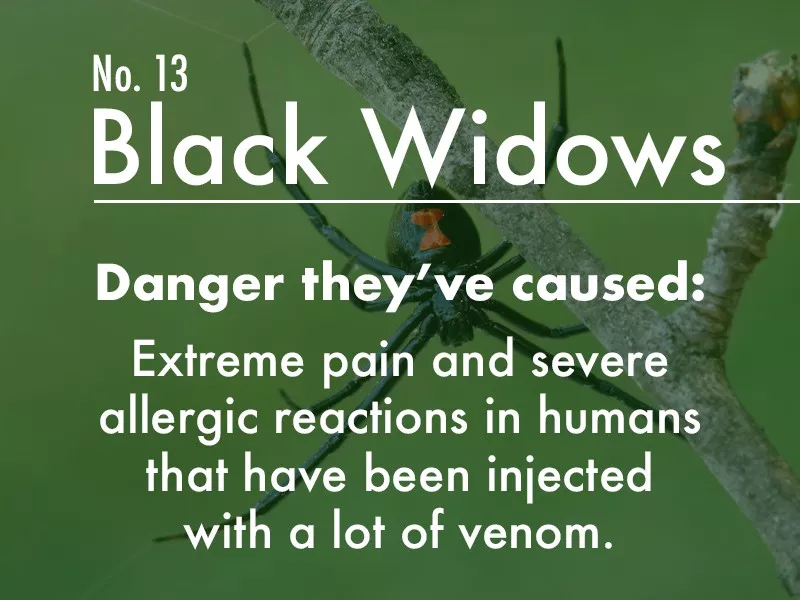While insects serve a crucial role in our ecosystem, several people find them terrifying. Not only do they look scary, but a sting or bite from one of the dangerous insects on this list can also result in extreme pain and even fatality in some cases. Needless to say, we don’t blame you for wanting to avoid them.
Luckily, some are very easy to avoid, as they live in far-flung locales, but we can encounter others like ants, bees and wasps at any time. So, we recommend you get to know these most dangerous insects in an effort to stay safe.
Note: If you believe you have an infestation of any of these insects, contact your local pest control company to remove them safely.
What to Know About Black Widows

Getty Images
Black widows are some of the most venomous spiders in the world. In fact, their venom is 15 times stronger than that of a rattlesnake. Much like the brown recluse, they keep to themselves and only lash out when they are disturbed, and it’s only the female that can really do some damage.
When someone is bitten, they’ll feel a pinprick at the site, and pain will move throughout the body within a few minutes. Nausea, sweating, muscle aches, hypertension and difficulty breathing can occur. These symptoms can last several days, but luckily, there is an antivenom available. While they can make someone extremely sick, they rarely cause death.
What to Know About Botflies
When it comes to the botfly, there’s good news and bad news. The good news — unlike other flies, they don’t carry parasites. Now for the bad news — their larvae burrow into human skin. As matter of fact, they need a mammalian host to survive. In 2018, a Florida woman who went on her honeymoon in Belize had a mysterious itching and hole in her groin area, which was later discovered to be a baby fly that had made its home in her skin.
Once botfly eggs are in the human body, its heat allows them to hatch. This can last anywhere from 27 to 128 days. While the fly is growing, it causes painful, oozing pustules, and some people can actually feel it moving. While the botfly doesn’t have a big body count in terms of fatalities, its host’s skin can become infected, which can lead to death if untreated.